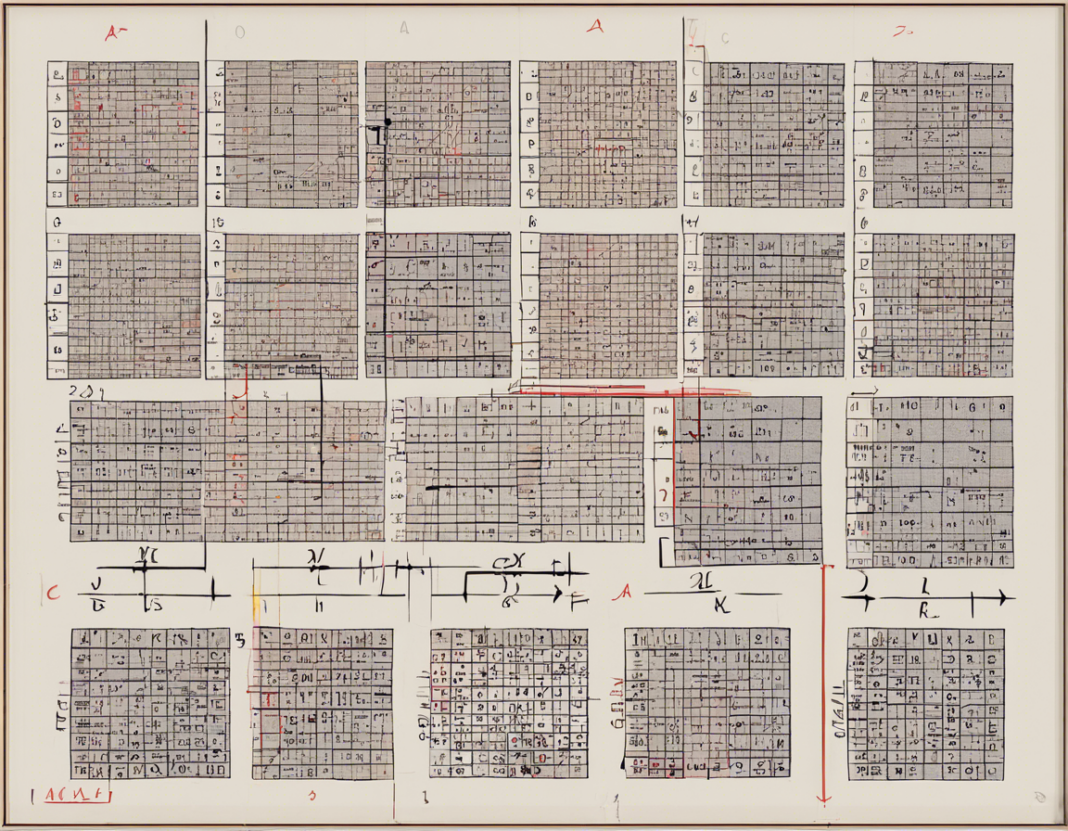Linear algebra is a fundamental branch of mathematics that deals with vector spaces and linear mappings between these spaces. It has a wide range of applications in various fields such as engineering, physics, computer science, and economics. One of the central problems in linear algebra is solving systems of linear equations. When dealing with a system of three equations with three unknowns, it can be conveniently represented using a 3×3 matrix.
In this blog post, we will delve into the world of solving a system of linear equations with a 3×3 matrix. We will discuss the basics of matrices, how to set up a system of linear equations using a 3×3 matrix, and the various methods to solve them.
Understanding Matrices:
Before diving into solving systems of linear equations with a 3×3 matrix, it’s crucial to understand what a matrix is. A matrix is a rectangular array of numbers arranged in rows and columns. In the context of linear algebra, matrices are used to represent linear transformations and systems of linear equations.
A 3×3 matrix, as the name suggests, is a matrix with 3 rows and 3 columns. It looks like the following:
[ \begin{bmatrix} a & b & c \ d & e & f \ g & h & i \end{bmatrix} ]
Each element in the matrix is denoted by a letter, and the position of the element is determined by the row and column it lies in.
Setting up a System of Linear Equations with a 3×3 Matrix:
To solve a system of three equations with three unknowns using a 3×3 matrix, we need to set up the equations in a specific format. Consider the following system of equations:
- (2x + 3y – z = 7)
- (4x – 3y + 2z = 4)
- (-x + 2y + 3z = -5)
We can represent this system of equations using a 3×3 matrix as follows:
[ \begin{bmatrix} 2 & 3 & -1 \ 4 & -3 & 2 \ -1 & 2 & 3 \end{bmatrix} \begin{bmatrix} x \ y \ z \end{bmatrix} = \begin{bmatrix} 7 \ 4 \ -5 \end{bmatrix} ]
This system can be rewritten in matrix form as (A\mathbf{x} = \mathbf{b}), where (A) is the coefficient matrix, (\mathbf{x}) is the column matrix of unknowns, and (\mathbf{b}) is the column matrix on the right-hand side of the equations.
Methods to Solve a System of Linear Equations:
There are several methods to solve a system of linear equations represented by a 3×3 matrix. Some of the common methods include:
Method 1: Gaussian Elimination
Gaussian elimination is a systematic method to transform the augmented matrix ([A | \mathbf{b}]) into row-echelon form or reduced row-echelon form through a sequence of elementary row operations. Once the matrix is in row-echelon form, back substitution can be used to solve for the unknown variables.
Method 2: Cramer’s Rule
Cramer’s Rule provides a formulaic approach to solving systems of linear equations using determinants. By calculating the determinants of matrices obtained by replacing one column of the coefficient matrix with the column matrix (\mathbf{b}), the values of the unknown variables can be determined.
Method 3: Matrix Inversion
Another method to solve a system of linear equations is by matrix inversion. If the coefficient matrix (A) is invertible, then the solution can be obtained using the formula (\mathbf{x} = A^{-1} \mathbf{b}), where (A^{-1}) is the inverse of the coefficient matrix.
Example: Solving a System of 3 Equations with 3 Unknowns
Let’s consider a specific example to illustrate how to solve a system of three equations with three unknowns using a 3×3 matrix. We will solve the following system of equations:
- (x + y + z = 6)
- (2x – y + 3z = 9)
- (3x + 2y – z = 2)
Step 1: Setting up the 3×3 Matrix
The augmented matrix for this system will be:
[ \begin{bmatrix} 1 & 1 & 1 & | & 6 \ 2 & -1 & 3 & | & 9 \ 3 & 2 & -1 & | & 2 \end{bmatrix} ]
Step 2: Gaussian Elimination
By performing Gaussian elimination on this augmented matrix, we can obtain the row-echelon form:
[ \begin{bmatrix} 1 & 1 & 1 & | & 6 \ 0 & -3 & 1 & | & -3 \ 0 & 0 & -4 & | & -16 \end{bmatrix} ]
Step 3: Back Substitution
After obtaining the row-echelon form, we can easily perform back substitution to find the values of (x), (y), and (z) by working bottom-up:
[ z = 4, \quad y = 1, \quad x = 1 ]
Therefore, the solution to the system of equations is (x = 1), (y = 1), and (z = 4).
FAQs (Frequently Asked Questions):
Q1: What is the importance of solving systems of linear equations using matrices?
A1: Solving systems of linear equations using matrices allows for a more concise and structured approach to finding solutions, especially in higher dimensions.
Q2: Can a 3×3 matrix always be used to represent a system of three equations with three unknowns?
A2: In most cases, yes. A 3×3 matrix is sufficient to represent a system of three linear equations with three unknowns unless the system is singular or inconsistent.
Q3: Is there a limit to the number of unknowns that can be solved using matrices?
A3: Matrices can be used to solve systems of linear equations with any number of unknowns; however, the computational complexity increases with the number of variables.
Q4: What are some real-world applications of solving systems of linear equations with matrices?
A4: Applications include solving network flow problems, analyzing electrical circuits, optimizing resource allocation, and modeling chemical reactions.
Q5: Are there software tools available to assist in solving systems of linear equations with matrices?
A5: Yes, software tools like MATLAB, Mathematica, and Python libraries such as NumPy provide functionalities for solving systems of linear equations using matrices.
Solving systems of linear equations with a 3×3 matrix is a fundamental skill in linear algebra, with applications spanning various domains. Whether using Gaussian elimination, Cramer’s Rule, or matrix inversion, the ability to manipulate matrices efficiently is a valuable tool in problem-solving and mathematical modeling.


